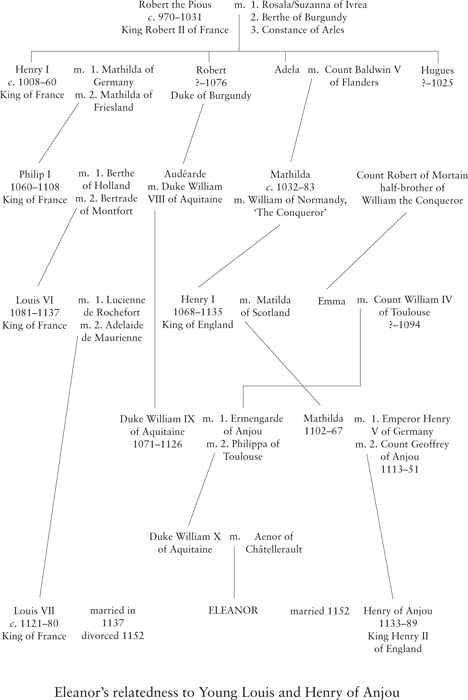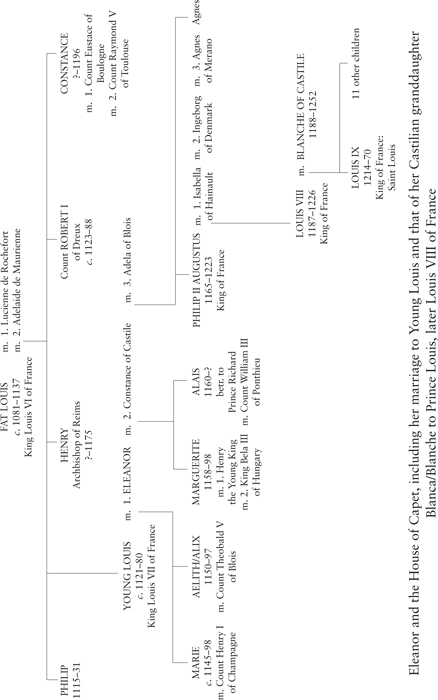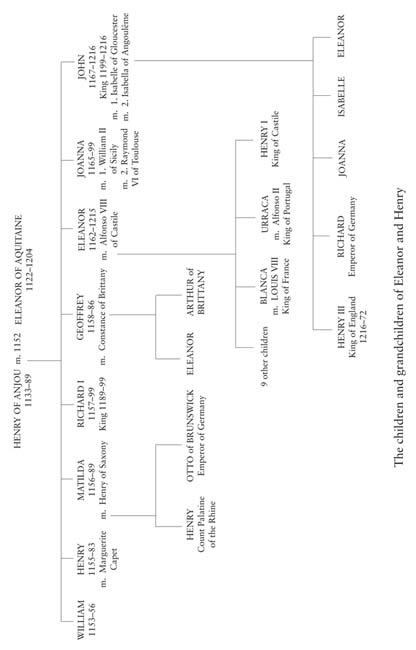April Queen (58 page)
Authors: Douglas Boyd

But the saddest of all
trobairitz
poetry is the
canso de mau maridada
:
Si anc fui bèlha ni prezada
ar sui d'aut en bas tornada
qu'a un vilan sui donada
tot per sa gran manentia.â¦
[Though once for beauty I was renowned / now the whole world's turned upside-down. / Just because he's rich and powerful / they've given me to a man who's evil.â¦]
Although love was an important theme of both male and female troubadours, the word
amor
means far more than just carnal desire, while
fin amar
is pure and perfect love in what came to be the courtly sense. In Occitan, love is the motor of all things, so much so that a common way of saying âbecause' is
per amor de
.
Some academics have traced the inspiration of the troubadours to Ovid's
Art of Love
, but the thrice-married Roman poet was compiling a male hunter's manual of tricks to snare the female prey, whereas troubadours depicted women as desirable equals or unattainable superiors lording it over men they enslaved. A more likely inspiration lies in the erotic and romantic poetry of Moorish Spain.

Eleanor’s relatedness to Young Louis and Henry of Anjou

Eleanor and the House of Capet, including her marriage to Young Louis and that of her Castilian granddaughter Blanca/Blanche to Prince Louis, later Louis VIII of France

The children and grandchildren of Eleanor and Henry
1. All translations are by the author, unless otherwise indicated.
2. The Occitan texts quoted in the original come from many sources and do not conform to any standard orthography.
3. Names of principal characters are in their modern English forms. Since chroniclers and historians refer to twelfth-century figures in Latin, French and English forms and with many variations of spelling, familiar names have been retained; others have been simplified to avoid confusion, e.g. Rotrou of Warwick, Archbishop of Rouen is called ‘Rotrou of Rouen’.
| PL | J.P. Migne, Patrologiae Latinae (221 vols), Paris, 1844–64 |
| RHF | Recueil des Historiens des Gaules et de la France , ed. L. Delisle (24 vols), Paris, 1869–80 |
| Richard | A. Richard, Histoire des Comtes de Poitou , Paris, Picard, 1903, vol. II |
1.
He is also referred to as William VIII, being the eighth Count of Poitou to bear the name, but to avoid confusion is here treated as the tenth Duke William of Aquitaine; for the same reason his father the troubadour duke is called William IX.
2.
A tomb discovered at Padrón in Galicia in 813 was declared that of Saint James or Sant’Iago in Spanish. Compostela is a corruption of the Latin
campus stellae
; an angel was said to have revealed the whereabouts of the tomb in a field to which believers were led by a star.
3.
RHF, vol. XII, p. 435.
4.
Fragment of a prayer by the early twelfth-century Gascon troubadour Cercamon, a contemporary of both William IX and William X.
5.
Richard, p. 56.
6.
He was also King Henry I of England.
7.
C. Radcliffe,
Medicine and Society in Later Medieval England
, Thrupp, Sutton, 1997, p. 151.
8.
A. Molinier,
Vie de Louis le Gros par Suger, suivie de l’histoire du roi Louis VII
, Paris, 1887, p. 128.
9.
Richard, p. 58:
‘Ludovicus filius noster iam in regem sublimatus’
.
10.
Ibid.
11.
Molinier,
Suger
, p. 128.
12.
Ibid.
13.
RHF, vol. XII, p. 435.
14.
The dates of the expedition to Bordeaux are disputed. Those given here fit all the known facts and are computed on the rate of advance for a mixed force of cavalry and infantry, plus baggage train. See Richard, p. 61.
15.
A. Hyland,
The Horse in the Middle Ages
, Thrupp, Sutton, 1999, p. xi.
16.
The elevated western façade, in which counterbalanced bells are hung, is a feature of Romanesque churches in the south-west.
17.
There being no accents in French at the time, the name was also written Alienor (with a terminal ‘d’ when declined in Latin), and Aanor and Leonora or even Elinor, the variant Shakespeare used.
18.
L’Histoire de Guillaume le Maréchal
, ed. P Meyer, vol. 3, Paris, 1901, p. 28.
19.
In French,
Ne quittez pas un fil avant la fin d’avril.
20.
In Occitan,
A l’entrada del temps clar
.
21.
Molinier,
Suger
, p. 128.
22.
Ibid., pp. 58–9.
23.
L.M. Paterson,
The World of the Troubadours
, Cambridge, Cambridge University Press, 1993, pp. 103–4.
24.
C. Higounet and A. Higounet-Nadal,
Grand Cartulaire de la Sauve Majeure
, Etudes et Documents d’Aquitaine series, University of Bordeaux III, 1996, ref. 1280,
‘quo defunto ilustri aquitannorum duce et comite pictavis guillelmo per filiam ipsiu alienordi nobis sorte matrimonii cedit’
.
25.
Using ferries across the Gironde at Blaye or the Garonne and Dordogne further south, plus the Charente at Taillebourg.
26.
Chronique de Touraine
, ed. A. Salmon, Tours, 1894, p. 134.
27.
Ordericus Vitalis, The Ecclesiastical History of England and Normandy
, ed. T. Forester (4 vols), London, 1853, vol. IV, p. 182.
1.
R. Bartlett,
England under the Norman and Angevin Kings
, Oxford, Oxford University Press, 2000, p. 537.
2.
Like others housing a black virgin, the cathedral is oriented south-west to north-east, so it is really the south-western portal.
3.
‘in sordibus generamur, in tenebris confovemur, in doloribis parturimur’
. From
Feria IV hebdomadae sanctae sermo 6
, in
Sancti Bernardi opera
, ed. Leclercq, Rome, Talbot & Rochais, 1957.
4.
John VIII, Epist. XXXVI (28 Oct. 876) in PL, vol. 126, p. 690.
5.
C. Higounet, J. Gardelles and J. Lafaurie,
Bordeaux pendant le Moyen Age
, Bordeaux, Delmas, 1963, p. 169.
6.
Vitis vinifera
is not native to France, but was introduced by Roman merchants seeking a cheaper and better-tasting alternative to expensive imported Provençal and Italian wines with the flavour of retsina, due to the pine resin used to waterproof the terracotta amphorae in which they were shipped. First attempts to cultivate Italian varieties of grapevine failed for reasons of soil chemistry. It was not until vine roots were brought from Epirus (Turkey) and planted in their own soil in trenches hacked out of the bedrock near St Emilion that the most important industry of the south-west began.
7.
Mer
here meaning a tidal river.
8.
Molinier,
Suger
, p. 150.
9.
Bernard of Clairvaux,
Epistolae
, in PL, vol. CLXXII, p. 286.
10.
Ibid., pp. 257–9.
11.
Stephen of Paris, quoted in A. Kelly,
Eleanor of Aquitaine and the Three Kings
, Cambridge, MA, Harvard, 1950, p. 13.
12.
Hence the expression ‘a good trencherman’ from
tranche
, a slice of bread.
13.
B.S. James,
The Letters of St Bernard of Clairvaux
, Thrupp, Sutton, 1998, Letter 80.
14.
His later rebuilding of Lanfranc’s Canterbury Cathedral resulted in the choir there being a twin of the choir in St Etienne.
15.
The term was first used by Raphael and other Renaissance artists, scornful of work they considered on a level with the barbarian Gothic tribes that had destroyed the Roman Empire and its classical culture in the fifth century
AD
. In the eighteenth century, examples were made of Notre Dame and many other churches, whose original medieval stained glass was destroyed
en masse
and the painted walls, columns and statues scrubbed bare.
16.
Derived from
paradis
because the elaborately carved western walls and doors of churches telling biblical stories for the illiterate were used as a backdrop to represent paradise in the three-day mystery plays during the Age of Faith.
1.
Grammar, rhetoric and dialectic.
2.
Arithmetic, music, geometry and astronomy.
3.
James,
Letters of St Bernard
, Letter 317 and note.
4.
Ibid, Letter 80.
5.
In Latin,
Sic et Non
.
6.
John of Salisbury,
Epistolae
, in PL, vol. CIC, p. 113.
7.
Since replaced by the Gothic cathedral on the same spot.
8.
Love Lyrics from the Carmina Burana
, ed. and trans. P.G. Walsh, Chapel Hill, NC and London, University of North Carolina, 1993, p. 73.
9.
James,
Letters of Saint Bernard
, note to Letter 209.
10.
Molinier,
Suger
, p. 151.
11.
Richard, p. 67.
12.
PL, vol. CLXXVIII, p. 185.
13.
James,
Letters of St Bernard
, note to Letter 235.
14.
Ibid., Letter 239.
15.
See, for example, G.R. Evans,
Bernard of Clairvaux
, Oxford, Oxford University Press, 2000, p. 69:
ecce pax non promissa sed missa, non dilata sed data, non prophetata sed praesentata.
16.
James,
Letters of St Bernard
, Letter 92.
17.
Ibid., Letter 326.